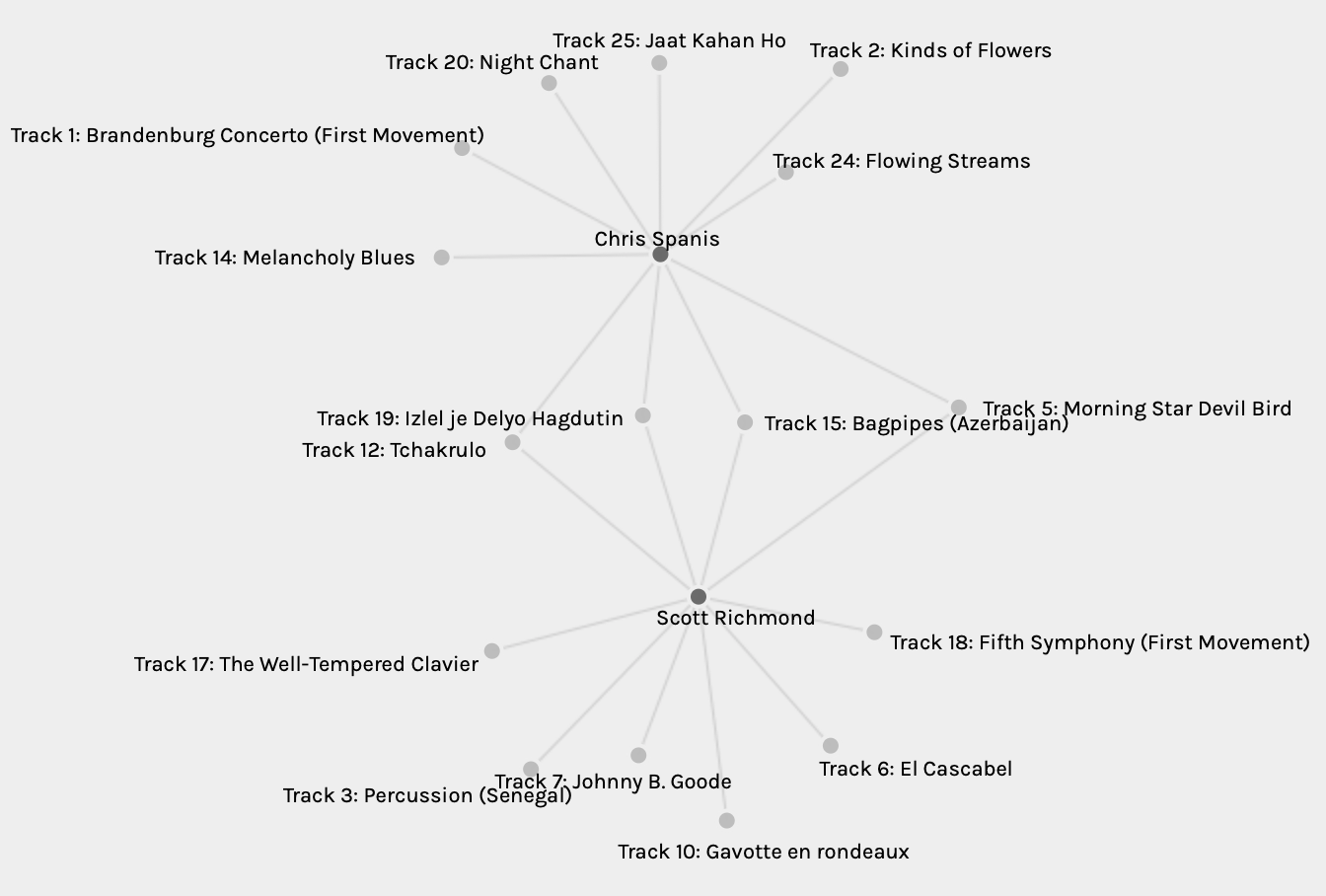
This post is the result of the two authors having a phone conversation while trying to digest the network data on Palladio. After some frustrations, we were able to understand what we were looking at and quickly turned toward analysis.
The way the data is presented in Palladio gives very little context on the underlying reasons why individuals chose what they chose. The co-authors of this post came to our curation decisions from very different places. One of us chose based on purely auditory aesthetics or pleasingness, whereas the other chose based on an attempt at a maximally diversified spectrum of human musical representation and auditory modes. This makes it very difficult to create any kind of groupings or communities based on common interests or ways of thinking. Based on this kind of selection, how would any algorithm be able to make sense of anything beyond the music selection themselves?
Google contextualizes searches on two levels:
- 1 – not signed in – uses location data, session search history, device, operating system, etc. feeding into a set of assumptions which direct the algorithm.
- 2 – signed into a google account – uses, basically, your entire life.
We were unable to find a way to group classmates connecting them by what they did NOT choose in common (null commonalities)
This activity was less an activity in choosing the “best,” but rather eliminating options. All of the music is worth including – we could have either chosen our favourites OR eliminated options for various reasons. Just as the sort/web is not able to show WHY we chose our choices, it is unable to resolve why we didn’t choose the ones we omitted.
How could one go about trying to suss out motives or commonalities among classmates?
- We could attempt to categorize the songs by genre and look at commonalities or diversions.
- folk, classical, etc.
- vocal, instrumental, etc.
- major or minor keys
- Beats per minute or cadence
- “civilized” vs. “ethnic” or high vs. low technology (I intentionally used obviously massively politically charged language to exemplify that arguably all attempts at genrefication will oversimplify, overgeneralize, and stereotype.)
…Did classmates tend towards selecting within or among common genres or did they share in common the goal of attempting to represent diversity in genres?
- We could also layer in demographic information on the classmates (self-provided or mined from UBC’s student records)
- Sex or gender could yield interesting data
- Age – was age a significant factor in choice? What if there is a young student in the class who felt that all of the musical choices were terrible?
- Location – different places in the world appreciate wildly different types of music, e.g to Westerners, the minor scale sounds sad or mysterious, but in southeast Asia, it is the preferred traditional scale.
- Ethnicity
- Education
Final Thoughts:
We were both surprised at how few songs we chose in common. Upon discovering this, we immediately engaged in the process of accusing the other of flawed selection reasoning. This highlights that the personal differences in choice were not just due to sociocultural differences but also due to potential interpretations of the assignment (the selection criteria themselves).
At the end of the day, no matter how we treat the data, the question remains: What does the data actually mean? For instance, is there any relevance to the fact that Chris is one of the only classmates that didn’t choose Johnny B Goode? Perhaps, the quiz could be reconstructed to ask classmates to score songs on a weighted scale, in which students must rate every song on a continuum but only 10 songs allowed the top weighting. There could also be a checkbox for a null choice or songs that classmates explicitly did not want to be included on the Golden Record. While we wouldn’t know why without a text box (and even so, can we ensure honesty or self-knowledge?), it would yield useful data.

